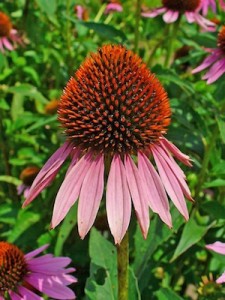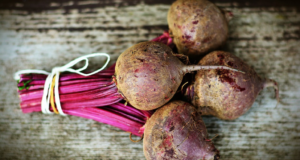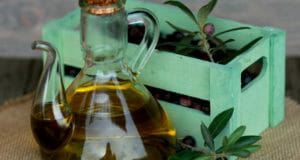 You probably associate the name echinacea with a medicinal herb. It enjoyed much attention several years ago as an ingredient in cold remedies and preventions and was a trendy product in the herbal supplement aisle of many drug stores. While it may have gone out of style lately (at least in grocery stores), echinacea does have some important medicinal properties of which you may want to take advantage.
You probably associate the name echinacea with a medicinal herb. It enjoyed much attention several years ago as an ingredient in cold remedies and preventions and was a trendy product in the herbal supplement aisle of many drug stores. While it may have gone out of style lately (at least in grocery stores), echinacea does have some important medicinal properties of which you may want to take advantage.
Echinacea is a lovely perennial flower that can brighten up your garden and goes by the alternate name purple coneflower. Although some species may be other colors, purple is most common. The flower of echinacea resembles that of a daisy, and indeed it is related to daisy species. Echinacea is an herbaceous perennial that tolerates droughts fairly well. Most species grow up to three or four feet tall and have straight stems that do not branch. The petals may have hair or may be smooth depending on the species. The name coneflower comes from the fact that the petals generally point downward and the seed cone in the middle tapers upwards. The overall effect is of a cone shape.
Nine distinct species of echinacea exist, and there are more than fifty hybrids that have been cultivated in modern times. Readily available species that you can purchase for your garden will vary depending on where you live. The most common echinacea that you will see commercially is Echinacea purpurea with its large purple, daisy-like flowers and bristling seed cones. The smallest flowers are found on Echinacea angustifolia. This species has pink or purple flowers, or rarely white. Echinacea pallida has mauve, white, or pale pink flowers with droopy petals and can grow up to four feet in height. If you are lucky, you may be able to find the rare Echinacea paradoxa, which has yellow flowers. Other species of echinacea are still around but are considered endangered in the wild, such as Echinacea laeviagata and similata.
Echinacea is native to North America and grows wild throughout southern Canada and across much of the central and eastern United States. You will find echinacea in open fields and prairies or sometimes in open, dry, wooded areas. Archaeological evidence indicates that Native Americans used this plant as far back as four hundred years ago. They used echinacea as a medicine for treating everything from colds and toothaches to rabies and snakebites.
Echinacea In Your Garden
Growing and cultivating echinacea is not difficult, especially in zones three through nine. You can purchase plants from a gardening center or take cuttings from a friend’s garden. Echinacea responds well to making root divisions. It is also possible to grow Echinacea purpurea from seed, which can save you a little money if you can’t find a neighbor with established plants. The seeds germinate readily in ten to twenty days. You may choose to start the seeds outside, but it is better to use containers and to transplant later. By doing so, you will avoid competition from weeds until your plants are strong and growing well. Other species besides E. purpurea do not germinate as easily and have lower rates of success. You may be better off purchasing plants if you are hoping to grow other species.
Echinacea prefers to grow in soil that drains well and has a pH between six and eight. Some of the species will want soil that is rich in lime, but E. purpurea is less particular. A little light fertilizing when you put your plants in or do your final transplanting from container to garden will be beneficial, but after that, fertilizer is not necessary. Water your plants regularly until they are well established in the ground. After that, you will rarely need to water them, and they will even survive most droughts. The only types of conditions that will potentially kill your echinacea plants are soils with heavy clay or soil that is always damp. Weeds will not destroy your plants, but they do compete heavily with echinacea. Pull out weeds as they begin to grow around your plants, especially while they are still young.
New “Survival Herb Bank” Gives You Access to God’s Amazing Medicine Chest
Full sun is preferred for echinacea, but they will tolerate some light shade. You can expect your plants to give you consistent blooms from June all the way through October. You will also see more butterflies and birds in your yard after establishing echinacea. Butterflies are drawn to the flowers and birds that eat seeds can feed on them as well. If you have a particularly cold winter ahead, the roots of your echinacea plants will benefit from a ground covering of hay or pine needles.
Possible Medicinal Benefits
The benefits of consuming echinacea have been known for hundreds of years, if only recently studied by science. Historically, echinacea has been used as an antimicrobial to help fight infections. It was also used to treat snakebites and to relieve pain. Some Native Americans used echinacea to sooth coughs and sore throats, but it wasn’t until modern times that people believed the plant could alleviate symptoms of the common cold as well as shorten its duration.
Whether this is really true or not is still up for debate. Many studies were conducted several years ago. Some were inconclusive, some determined that echinacea is effective in fighting colds, and some decided that it was ineffective. The jury is still out, but the idea behind the efficacy of echinacea in shortening or preventing colds is that it boosts the immune system. What is certain is that historically, echinacea has some definite benefits. As with any herbal supplement, you should only use echinacea minimally, and you should always consult with your doctor before doing so.
Using Echinacea
To consume echinacea, you can use the petal, leaves, roots, or all of the above. As the results of studies on the effectiveness of using echinacea medicinally are up in the air, so is the question of which part of the plant is best. Many believe that the roots contain the most active compounds. Harvesting the roots is best done in late fall, after the flowers have gone to seed and after a couple of frosts. Cut just a portion of the root so that the plant will come back in the spring. Wash the root thoroughly and then cut it into small pieces (about half-inch cubes). Lay the pieces on a screen in an area that is well-ventilated, dry, and out of direct sunlight. It may take several days for the root fragments to dry, but when they are, simply store them in an airtight glass container.
The flowers or leaves should be harvested right after the flowers begin to bloom. Cut each stem right where the first set of leaves is growing. Rinse the flowers and then hang them to dry or lay them flat on a screen. If hanging, tie a paper bag around the flower, as the petals will drop. When the leaves and petals are completely dry, store them in a sealed glass jar. Keep jars of both the roots and petals or leaves in a cool, dark, and dry location.
To consume echinacea, either make an infusion from the leaves and petals or a decoction out of the dried roots. For petals and leaves, use one to two teaspoons of the dry material per one cup of water. Steep in boiling water for fifteen to twenty minutes. For a decoction, use two teaspoons of dried root and simmer in one cup of water for twenty to thirty minutes. Strain out the leaves, petals, and roots before drinking the tea. You can also combine echinacea with other herbal tea elements.
Echinacea is considered to be mostly a safe herb to consume, however, you should always be cautious with supplements. Side effects are rare but can include abdominal pain, nausea, diarrhea, or an itchy rash. In very rare cases, it may cause a dangerous allergic reaction, so try a very small amount initially. And remember, always consult your doctor before adding any supplements to your diet.
©2012 Off the Grid News
 Off The Grid News Better Ideas For Off The Grid Living
Off The Grid News Better Ideas For Off The Grid Living




